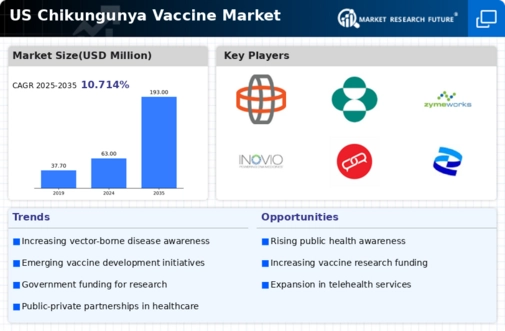The US Chikungunya Vaccine Market is witnessing significant competitive dynamics as various pharmaceutical and biotechnology firms endeavor to develop effective vaccines against the chikungunya virus, transmitted primarily by mosquitoes. With increasing awareness about the disease and its implications on public health, there has been a surge in research and development initiatives aimed at bringing promising vaccine candidates to fruition.
The market's competitive landscape is characterized by collaborations, clinical trial advancements, and strategic partnerships that are aimed at targeting this infectious threat more effectively. Alongside regulatory approvals and market entry strategies, the competition is heavily influenced by the need for robust clinical evidence and the capacity to manufacture and distribute vaccines effectively within the United States.
Vaxart has emerged as a key player in the US Chikungunya Vaccine Market, leveraging its innovative oral vaccine platform that offers distinct advantages over traditional intramuscular injection methods. The company focuses on the development of its vaccine candidates utilizing its proprietary technology, which enables them to present a unique approach to immunization delivery.
Vaxart's strengths lie not only in its advanced research capabilities but also in its strong intellectual property position that allows for differentiation in the competitive landscape. Additionally, the company's commitment to addressing unmet medical needs in chikungunya vaccination has garnered attention from investors and stakeholders alike, highlighting its potential to make a significant impact in the market should clinical trials yield favorable results.
Merck is another formidable contender in the US Chikungunya Vaccine Market, recognized for its long-standing expertise in vaccine development and a rich portfolio of successful products. The company has a strong market presence through established vaccination programs, which provides a solid operational backbone for entering new infectious disease markets, including chikungunya.
Merck’s commitment to innovation is evident through its extensive research and development programs, often bolstered by collaborations and strategic alliances with academic institutions and other biotech companies. The company is known for its robust pipeline and has made several strategic acquisitions that enhance its capabilities in developing vaccines. With a focus on delivering quality healthcare solutions and addressing emerging health threats such as chikungunya, Merck is well-positioned to leverage its resources and experience in navigating the complexities of the US vaccine landscape.






















